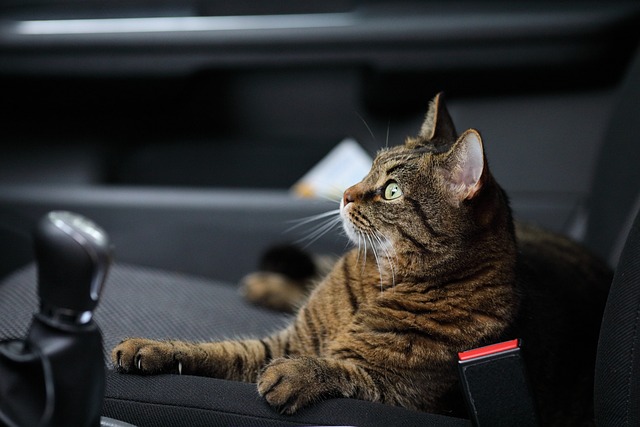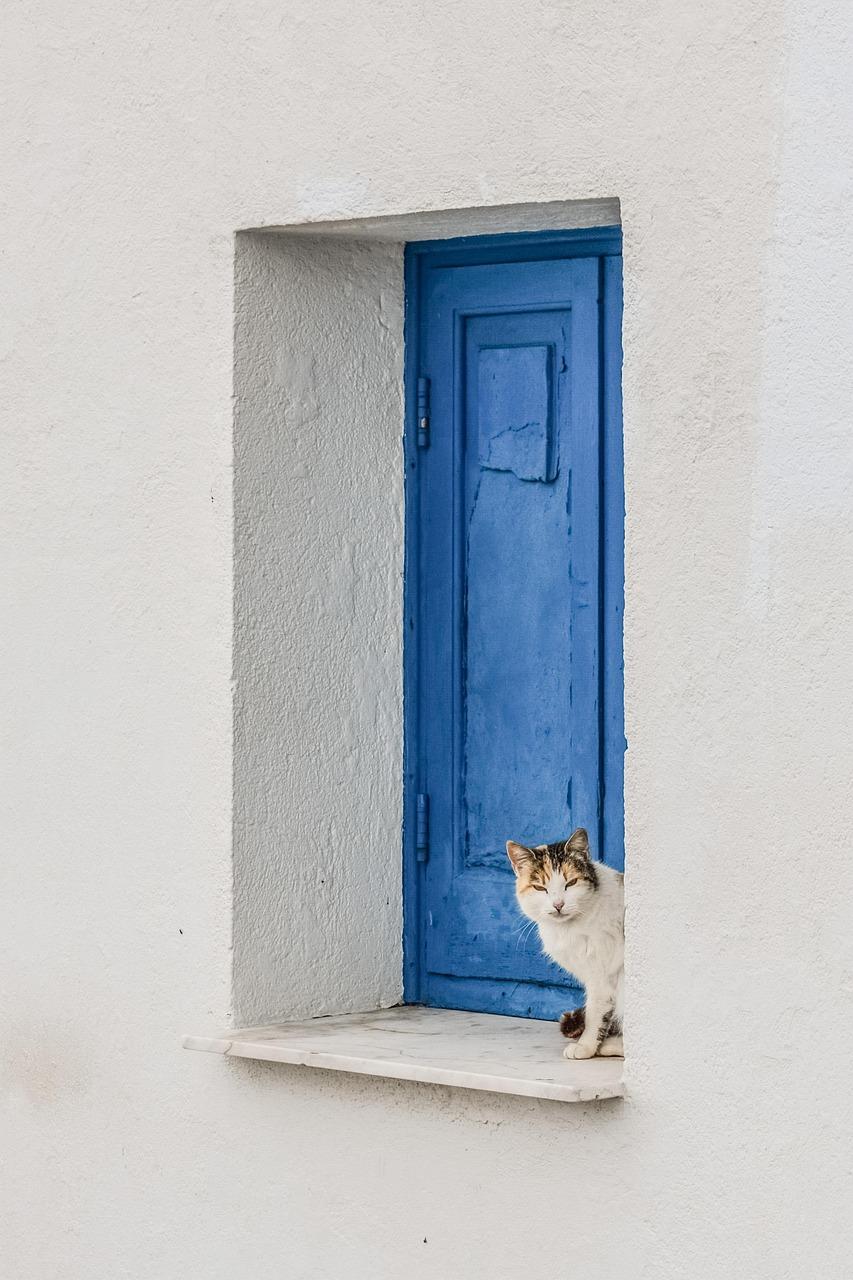Why Do Cats Pant in the Car?

Do you cringe at the sight of your furry friend panting in the car?
Wondering why they can't just chillax and enjoy the ride? 🐾
Well, fret not.
In today's guide, we'll uncover the mystery behind their panting frenzy and reveal some pawsome solutions to keep them cool and comfy.
Let's dive in, because your fluffball deserves nothing but the best.
Tips to Make Car Rides Less Stressful
To make car rides less stressful for your cat, here are a few things to please bear in mind:
- Take it slow by gradually introducing your cat to the car. Start with short periods of time inside so they get used to it.
- Create a calming atmosphere by using things like feline pheromone sprays or relaxing music during the ride.
- Stick to a routine before and during the journey. Cats thrive on predictability, so try to keep feeding times and play sessions consistent.
- Make sure the carrier is secure in the car to prevent sudden movements that might frighten your cat. Covering the carrier can also give them a sense of security and privacy.
- Keep the car well-ventilated and the temperature comfortable for your cat.
- If your cat gets extremely stressed during car rides, consider talking to your vet about using calming aids or sedatives.
By utilizing these suggestions, you can enhance the pleasure of car trips for both yourself and your beloved pet.
Main points I'll expand upon further down this article:
- Panting in the car is not normal for cats and can be a cause for concern.
- Cats pant in the car because they do not sweat, so their heart rate rises due to nervousness or anxiety.
- Stress, heat, and negative experiences can trigger panting during car rides.
- Brief spells of panting should stop once the cat starts to cool down, but heatstroke can be fatal.
- Consult a vet to determine if the panting is due to a medical condition or if additional anxiety relief is needed.
- Signs of stress during car rides include agitation, meowing, pacing, and drooling.
- Panting is a typical reaction to stress during car journeys, often triggered by motion and unfamiliar sounds.
- Short, frequent trips can help familiarize cats with car rides and create positive associations.
- Panting in cats is a sign of distress and may indicate underlying medical conditions.
- If panting persists or is unrelated to the car ride, seek veterinary evaluation.
And now, let's address one of the most crucial factors that can contribute to panting in cats during car rides.

You might be surprised to learn just how important proper ventilation is for your furry friend's comfort and safety on the road...
Why is Your Cat Panting in the Car?
Cats may pant in the car due to insufficient airflow. Opening a window or using the car air vent can help cool them down. Panting indicates nervousness, stress, or excessive heat. If panting persists, it could be heatstroke, which is a serious condition. Take precautions to prevent overheating.
Keep an eye on your cat in the car. Panting isn't normal for them.
Not enough air is a problem.
Air needs to flow to keep your cat cool.
You gotta get that air moving!
To fix it, open a window or use the car air vent.
Fresh air will keep your cat calm and chill.
But why do cats pant?

They don't sweat like us.
Panting means they're nervous, stressed, or too hot.
No need to worry!
The panting should stop when they cool down.
But if it doesn't, it might be heatstroke, which is serious. We definitely don't want that.
When driving with your cat, take steps to prevent overheating.
Watch how they feel, give them airflow, and stop for water breaks.
Your cat will love you for it.
Why Does My Cat Hyperventilate in the Car?
Cats might hyperventilate during car rides, just like humans with motion sickness.
It's uncomfortable for them, but your vet can help.
Proper medication will ease their distress, so don't hesitate to consult your vet.
You have to figure out if your cat's hyperventilation stems from an underlying medical condition or anxiety.
Ruling out any potential health issues is essential, and your vet will guide you through the process.
Experts exist for a reason—trust your vet's judgment and seek their guidance when it comes to your furry friend's well-being.
Why Are Car Rides Stressful for Cats?
| Common Stress Triggers | Potential Solutions |
|---|---|
| Loud engine noise | Play soothing music or use sound-dampening materials in the car |
| Vibrations and movements | Use a well-padded carrier and secure it with a seatbelt |
| Unfamiliar sounds | Block out external noise by covering the carrier |
| Feeling confined | Provide a comfortable and spacious carrier |
| Negative past experiences | Gradually desensitize your cat to car rides with short, positive trips |
| Anxiety about car movements | Speak softly and offer treats to create positive associations |
| Car sickness | Consult with your vet about medications or natural remedies |
Car rides can pose challenges for cats, as these furry creatures are highly sensitive to changes in their environment.
The unfamiliar sounds, vibrations, and movements during a car journey can induce significant stress in them.
The distress signals exhibited by cats during car rides can be quite unappealing.
These include excessive meowing, pacing, drooling, and panting.
You might wonder why cats pant when they are in cars.
The reason is that panting is a common response to the stress of being in a moving vehicle.
It occurs because the cat's heart rate increases, leading to heightened levels of anxiety.
Imagine a car performing unlikely ballet moves - this doesn't resonate well with cats, who struggle to cope with such movement.
Panting can also be associated with negative experiences linked to car rides, such as going to the vet. These visits alone are enough to turn a cat into a machine that pants excessively.
In addition to that, cats' anxieties about the car's movements can also trigger motion sickness, which further compounds their discomfort.
It's not an ideal combination, to say the least.
So, how can we support our feline companions during car journeys?
To begin with, you ought to create a secure and calming environment for them by covering their carrier with a blanket or towel.
This helps block out excess visual stimuli and fosters a cozy den-like atmosphere.
Moreover, getting your cats acquainted with car rides through short and frequent trips can be beneficial.
Taking them on joyrides around the neighborhood while offering reassurance along the way can help reduce their anxiety.
And let's not forget the power of delicious food rewards!
Creating positive associations with car rides can work wonders in alleviating stress levels.
With some patience and empathy, you can transform car rides into a perfect bonding experience. The next time you hit the road, both you and your cat will feel relaxed and eager for new adventures.
And if you're wondering how to travel with your pregnant furry companion, I've got you covered.
In my guide, Can You Travel With a Pregnant Cat, I share valuable safety tips and essential information for worry-free journeys.
Don't miss out on this must-read resource for all cat owners.
Other Reasons Your Cat May Pant
If your cat is heavily breathing in the car, there could be health issues at play causing their respiratory distress. It's really important that you reach out to your vet right away to rule out any potential problems.
Let me break down some other reasons why your cat might be panting:
- Heat stroke: If your cat's panting isn't due to anxiety or heat, it might be a sign of heat stroke. This is a serious situation and requires immediate attention from a vet.
- Heart disease: Panting can also be a symptom of heart disease in cats. To diagnose and treat any cardiovascular issues, it's crucial to have your cat thoroughly examined by a veterinarian.
- Respiratory issues: Cats can experience respiratory problems like asthma or chronic obstructive pulmonary disease (COPD), which may lead to panting. Your vet can conduct tests and suggest treatment options if necessary.
- Illness or infection: If your cat pants without any apparent stress or physical activity, it could indicate an illness or infection. A vet can determine the underlying cause and provide suitable treatment.
If your cat continues panting without connection to car rides or displays any signs of distress, it's absolutely vital that you seek veterinary care to assess the situation and get advice on keeping them safe during car journeys. 👩
And that wraps up today's article.
If you wish to read more of my useful articles, I recommend you check out some of these: How to Keep Cats Cool in Summer Without Ac, Why Does My Cat Have a Saggy Belly After Being Spayed, Can You Shave a Cat to Get Rid of Fleas, and My Cat Is Not Eating Force Feeding Your Cat
Talk soon,
-Sarah Davis